My friend Nicole DiMaggio sent us these photos of adult Magicicadas taken in Iselin NJ. The emergence is just getting started in New Jersey, and will really kick off next Tuesday when the temps hit the 80s.
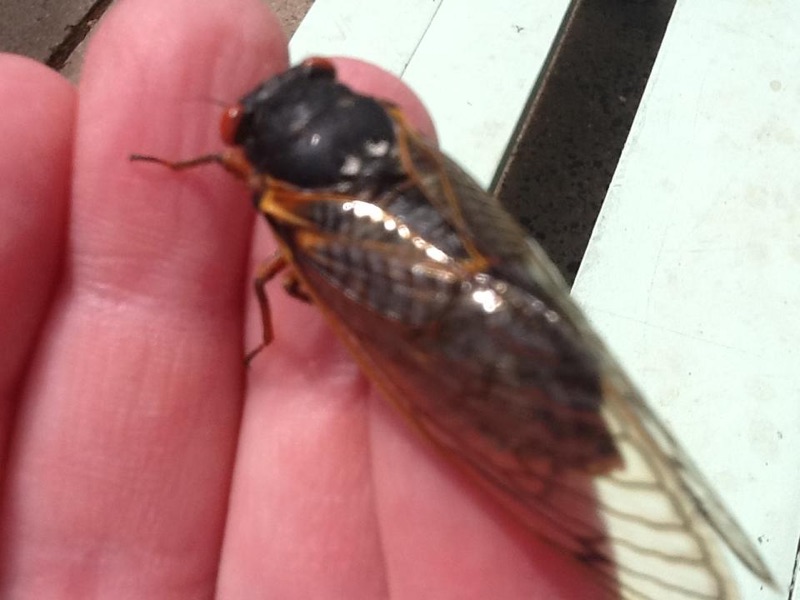
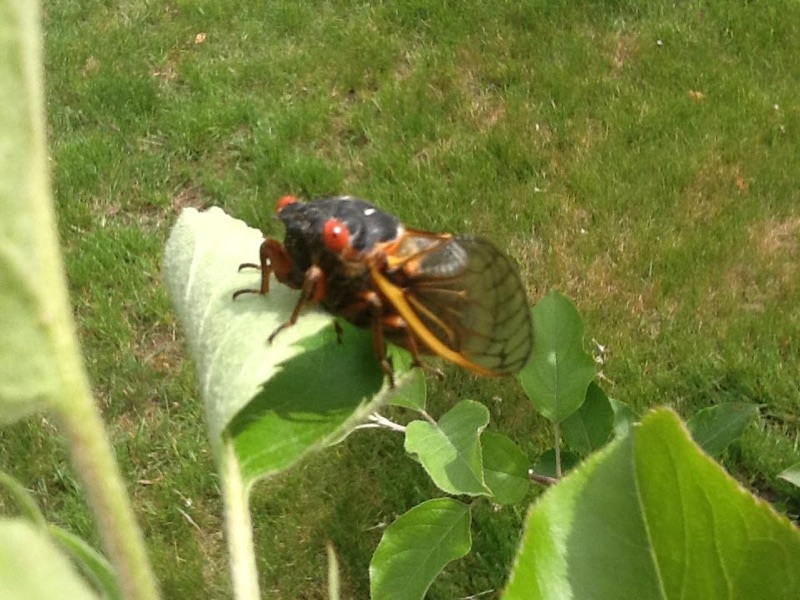
Cicadas have three types of life cycles: annual, periodical, proto-periodical.
My friend Nicole DiMaggio sent us these photos of adult Magicicadas taken in Iselin NJ. The emergence is just getting started in New Jersey, and will really kick off next Tuesday when the temps hit the 80s.


Nature photographer Candice Trimble of Front Royal, Va, sent us these Brood II Magicicada photos.
An adult Magicicada septendecim (Linnaeus 1758):
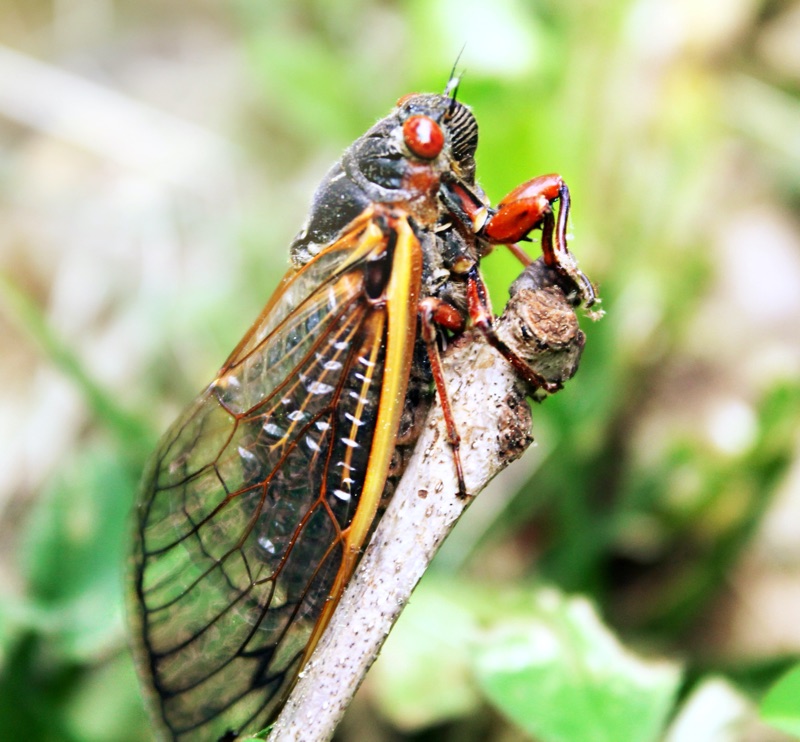
Magicicada exuvia (shell):
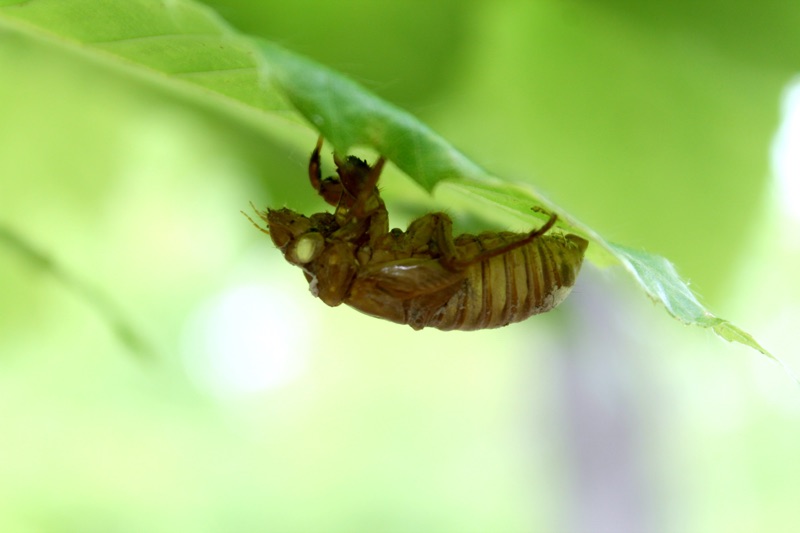
Magicicada adult (probably an M. septendecim):
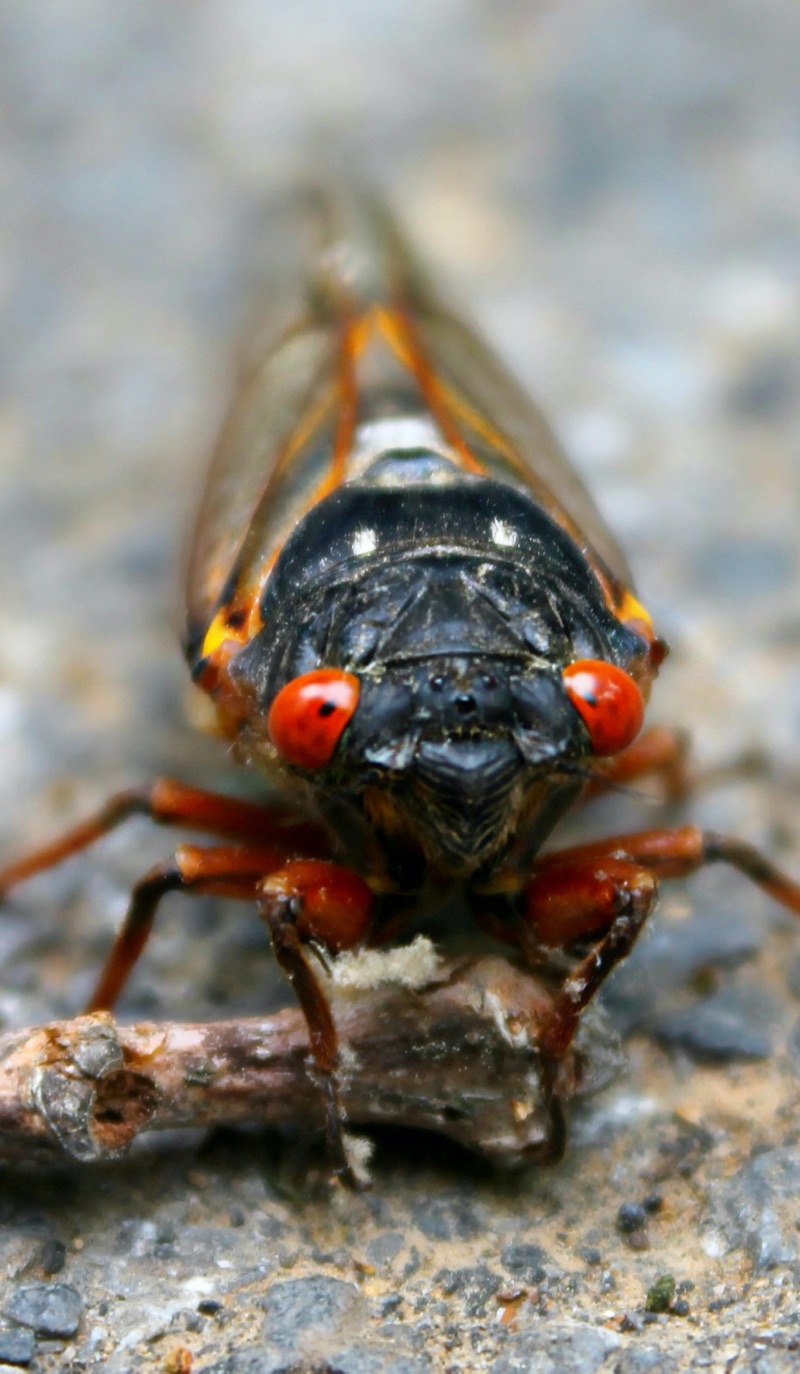
I didn’t see any nymphs emerge and undergo ecdysis tonight, but I did find plenty of cicada chimneys and nymphs trapped under slates.
Cicadas build chimneys above their holes, typically after it rains a lot and the soil becomes soft. The chimneys help keep water from rushing into their holes, and they keep ants and other menaces out.
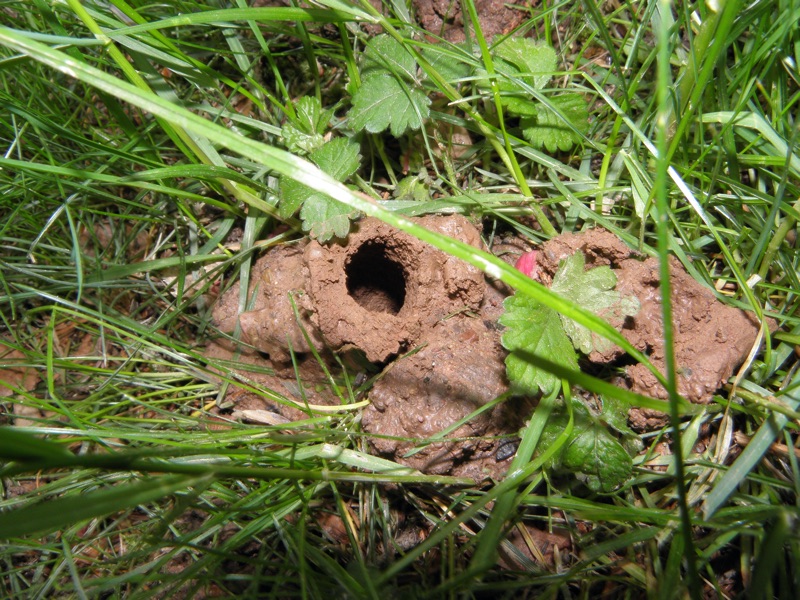
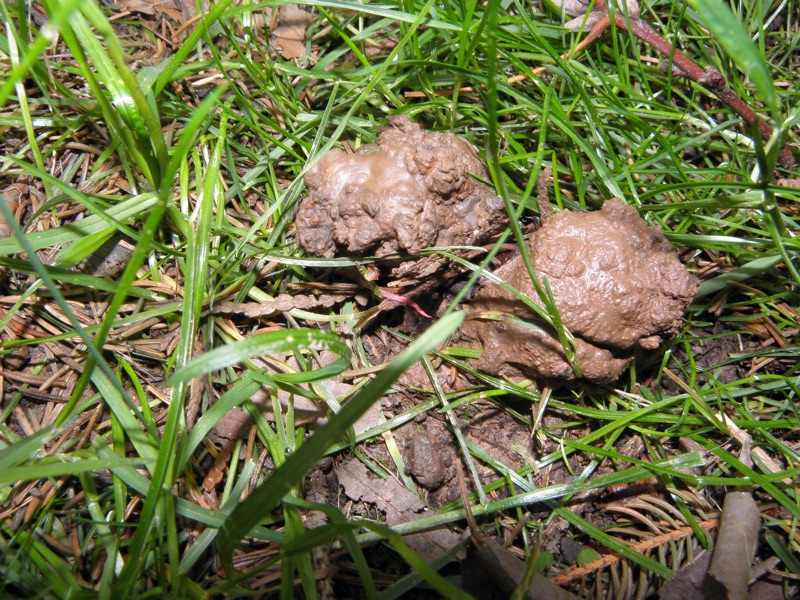
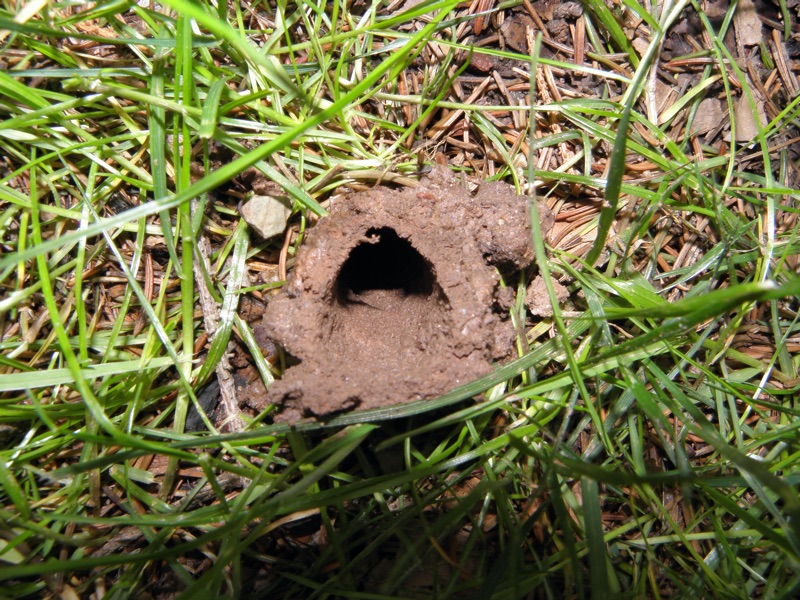
A good place to find cicada nymphs is under backyard slates (or similar objects that cover the ground). Flip over your slates and you might find a nymph tunneling their ways to the side of the slate.
Brood II 17 Year Cicada Nymph trapped under a slate from Cicada Mania on Vimeo.

Final update:
Here’s a map of all the towns reported in the comments:
View Towns where the Brood II cicadas emerged in 2013 in a larger map
Cicadas @ UCONN will eventually publish a complete and accurate map of the emergence.
17 year cicadas are about to emerge are currently emerging in New Jersey. I asked cicada super-expert Chris Simon of The Simon Lab at the University of Connecticut for some specifics. The information below is based on Dr. Simon’s notes.
Historically Brood II periodical cicadas have appeared in Atlantic, Bergen, Burlington, Cape May, Cumberland, Essex, Hunterdon (in the east), Middlesex, Monmouth (“Slight in eastern part”), Morris, Passaic, Somerset, Sussex, Union, and Warren Counties. Also, you can keep an eye on where cicadas are emerging in New Jersey (and report your own sightings) on Cicadas @ UCONN (formerly Magicicada.org), which has a live map of the emergence.
I’m personally very interested in periodical cicada sightings in Monmouth county — let us know if you spot any there.
Here are some specifics (don’t be dismayed if your town isn’t on the list — they still might appear in your town):
Atlantic County:
– Galloway
Bergen County:
– Alpine (Greenbrook Nature Sanctuary)
– Englewood
– Ft. Lee
– Oakland
– Wyckoff (near Lucine Lorrimer Sanctuary)
Essex County:
– Cedar Grove
– Essex Fells
– Livingston
– Maplewood
– Millburn (South Mountain Reservation)
– Montclair
– North Caldwell
– Short Hills (confirmed in 2013 already)
– Upper Montclair
– West Orange
Middlesex County:
– Edison (confirmed for 2013 – lots of exit holes near the Edison Monument).
– Fords
– Iselin (visually confirmed for 2013)
– Jamesburg
– Metuchen (confirmed in 2013 already)
– Perth Amboy
Mostly north of the Raritan River
Morris County:
– Flanders
– Kinnelton
– Madison
– Rockaway
Passaic County:
– West Milford
Somerset County:
– Bedminster (Pluckemin section)
– Belle Mead
– Bound Brook
– Far Hills
– Rocky Hill
– Warren
Union County:
– Fanwood
– Plainfield
– Summit (Confirmed – see a video)
– Westfield (Confirmed for 2013)
Warren County:
– Port Murray
BTW, what better way to celebrate Brood II in New Jersey like a Brood II tank top:

Return of the Cicadas is a documentary about the return of the Brood X periodical cicadas, by producer Samuel Orr. It is worth watching for for folks in the Brood II area so they know what to expect.
Take a look:
Yesterday I visited my family’s house in Metuchen, New Jersey. I looked in the backyard and found loads of cicada holes — a hole every 6″ to 12″. I was also clear that animals, like squirrels and raccoons, had been digging at many of the holes. Today I got a spade and gently dug around one of the holes. About 3″ down I found a Magicicada cassini nymph, about 1 inch in length, legs wiggling slowly, red eyes.
Here’s the hole:

Here is the nymph:

It’s clear that the cicadas are ready to emerge, and are just waiting for the temperatures to get a little warmer (to warm their bodies to around 64 degrees F/18º C). Today reached 72 degrees F. It will reach 77 F on Friday, and some will likely emerge. Saturday temperatures will be back down to 39 F. These cicadas will likely be confused for a little while.
More holes, many of which were widened by predators looking for a cicada snack!
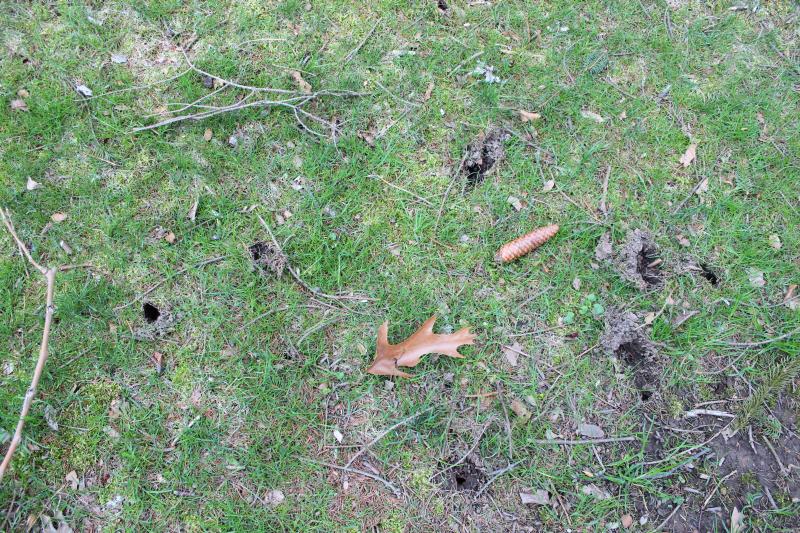
Also visit: updates on the emergence.
Gene Kritsky is one of the leading periodical cicada researchers. He’s asked that we help with his research regarding temperature and cicada emergence. He needs to know the date that cicadas first emerge, and then the date when they appear in large numbers in a given locality. To contact Gene with your findings, email him at cdarwin@aol.com.
Here are the details:
I wanted to alert you to a paper that I published with Roy after Brood XIV. I had placed sensors at cicada depths in Roy’s backyard, and also hung others in the area trees. We recorded the temperatures at 10 minute intervals at all the locations. I was trying to find a weather model to predict soil temperatures without using probes. This would be cheaper for people wanting to monitor an impending emergence. This research is based on what potato farmers do to track the growth of their crop.
We found that the average of the running three day and two day mean temperatures was a good predictor of soil temps.
The formula along with the extended forecast can be used to forecast soil temperatures. Once we get the 64º F soil temps and a nice rain we got emergences. I am hoping to test this model again this year, which in part is why I emailing you. What I need to know is the date that cicadas first emerge, and then the date when they appear in large numbers in a given locality. I will then use weather data to check the soil model. Can you ask readers to send me that info? Many thanks.
You can find more details on the model at:
http://inside.msj.edu/academics/faculty/kritskg/cicada/Site/Estimating_soil_temperature.html
An easier way of getting to the details is to go to www.msj.edu/cicada and click on estimating soil temperatures. That site will also link them to John’s mapping page, activities for kids, etc.
Thank you for your help.
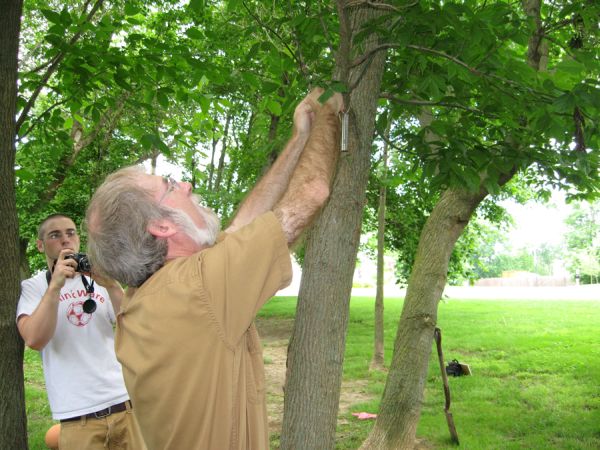
More info about Gene Kritsky:
My Goals and Objectives for the Brood II Emergence:

Chances are you might see me during the emergence. I’m told I look like “Lucius Malfoy”.
John Cooley of Cicadas @ UCONN (formerly Magicicada.org) kindly provided us with an updated version of the Brood II map. The old map was circa 1907. Click the image below for a BIG version:
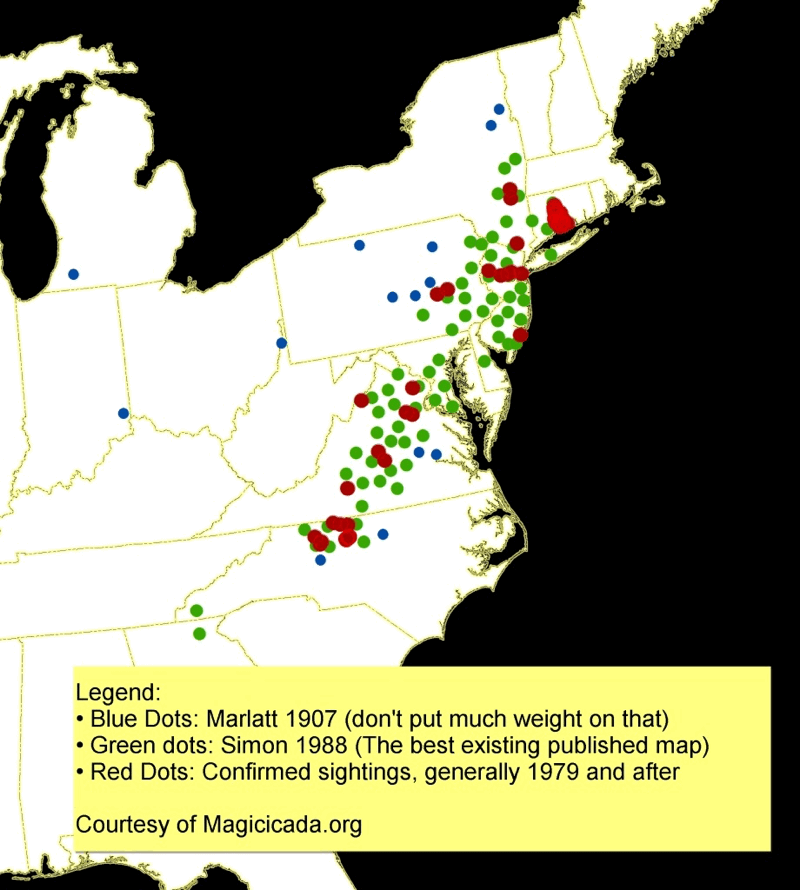
Are you preparing for the 2013 invasion of the Brood II Magicicada? If so, what type of cicada prepper are you?
If you’re visiting Cicada Mania, you’re probably trying to figure out when and where the Brood II cicadas will emerge. We have a page for that.
Once the cicadas arrive you’re also going to report them to Cicadas @ UCONN (formerly Magicicada.org), right? You’re also going to upload your photos and video to Facebook, Flickr, Twitter, YouTube, Vimeo, Pinterest, and Instagram, right? You’re going to tag your photos & video with appropriate tags like #BroodII, #Magicicada, and #17YearCicada as well.

Kids will probably enjoy a cicada emergence more than any one group of people. Kids will want to learn, capture, collect, observe, photograph, draw, and write about cicadas.
If you want to learn about cicadas, there are many cicada websites, including Cicada Mania. There are also many books to read; ask your local library to obtain a few of them.
Capturing periodical cicadas is easy. Unlike other insects, these cicadas are slow and easy to grab when they’re on the ground on low on a tree. You can use a butterfly net if you want to catch one in flight. At night, when they first emerge, they are especially easy to catch. You can use a flashlight to spot them coming out of the ground, and shedding their skins on tree branches.
A portable butterfly pavilion is a great place to temporarily keep and observe cicadas. It’s a lot better than a coffee can with holes punched in the lid. Another good option is to use an old aquarium and turn it into a terrarium filled with natural objects, like tree branches. You can also wrap a tree branch with netting and place the cicadas inside that, and observe then in their natural habitat.
It’s good to have a magnifying glass or a camera with a zoom feature so you can observe the cicadas up close. If you have a camera, make sure you take plenty of photos and videos so you have something to remember about the cicadas.
Preparation list:
Do you consider yourself a citizen scientist or amateur cicada researcher?
Prior to the emergence cicada researchers will monitor the temperature of the soil, using a ground thermometer, or a cicada tracker. They will also monitor the ground for dime-sized holes and cicada chimneys.
Each night the cicada researcher will check the ground at the foot of trees, waiting for the first emerging nymphs.
Once the nymphs start to emerge, the cicada researcher will record the location, take photos, video, and take notes on the number of cicadas observed. The researcher will also likely keep some samples of the cicada population.
After about a week, the male cicadas will be ready to sing. At this point, the researcher will record the cicada’s song with an audio recording device.
If you’re interested in collecting specimens, Bioquip has plenty of pinning and mounting, insect storage and netting supplies.
Massachusettes Cicadas has a good article on pinning cicadas.
Preparation list:
My best tip for photographers and videographers is practice shooting at night. Most Magicicadas will emerge at night, and you don’t want to miss their emergence and amazing transformation from nymph to adult!
My trick is to point a flashlight beam at the cicada — that way the camera will see the cicada and you won’t spend a lot of time getting the camera to focus and flash in the dark.
Don’t forget your best macro lens as well, to get great up-close shots.
Preparation list:
Yes, a lot of people eat cicadas! People add them to stews, chili, or just fry them up with spices! People even add them sweets like cookies and ice cream! I like to call them “shrimp of the dirt”.
Cicadas, like all insects, are arthropods — just like lobsters, shrimp and crabs — so you might be able to prepare them using similar spices. Buttered, spicy cicada — nummers!
My tips: 1) You do not want to eat them if your neighbor has sprayed them with insecticide first; 2) I hear they’re tastiest when they’re still recently emerged and white (teneral); 3) Consult your doctor before eating any creature that has lived underground for 17 years.
I, personally, haven’t tried to eat a cicada. I’m not squeamish; I just like them too much to eat one, and I suffer from arthropod allergies (I get gout when I eat crustaceans), so I avoid trying cicadas.
More info on eating cicadas, including recipes.
Preparation list:

I can sympathize with gardeners who are afraid that cicadas will damage or kill their plants. The good news is cicadas are not like true locusts. True locusts (which are actually a form of grasshopper) will strip plants of all leaves, flowers, and fruit. Cicadas only damage trees when they lay their eggs in branches. Typically a few of the weaker branches of a tree will die or weaken. The leaves turn brown, which is called flagging.
Cicadas are interested in trees. They can’t kill a large elm, maple, or oak. Where they can cause damage is to weaker ornamental flowering and fruit trees.
I’ve never personally experienced catastrophic cicada tree damage, but I’ve also never owned a flowering, miniature pear tree.
Preparation list:
I don’t recommend pesticides for three reasons: 1) collateral damage to other species of insects like honey bees, 2) I’m tired of hearing about pets that die from eating cicadas tainted with pesticides, and 3) I think cicadas are awesome, and I want to see them survive.
Be prepared to have to clean up dead cicadas in your yard. Depending on the number of cicadas in your neighborhood, you might need to clean them up with rakes and shovels, buckets, and wheelbarrows. They definitely stink when they start to rot, so you might want to bury them in a large hole, and cover the corpses with lime. I’ve heard of people composting their bodies as well.
Preparation list: